Do you know there is a breed that lays blue eggs and looks like it’s wearing a fluffy beard? That’s the Ameraucana chicken, a friendly and strong breed that comes from chickens that lay blue eggs and is a cousin to the Araucana chicken.
Ameraucanas come with fluffy cheeks along with a beard instead of ear tufts. They are friendly and calm, not like the Araucana. They are strong and healthy birds. Ameraucanas are more common than Araucanas but are still not very common.
In addition, Easter Eggers are different from Ameraucana hens, laying green and blue eggs but don’t match a specific breed’s features. Sounds like an interesting chicken breed? Let’s get into its profile in detail!
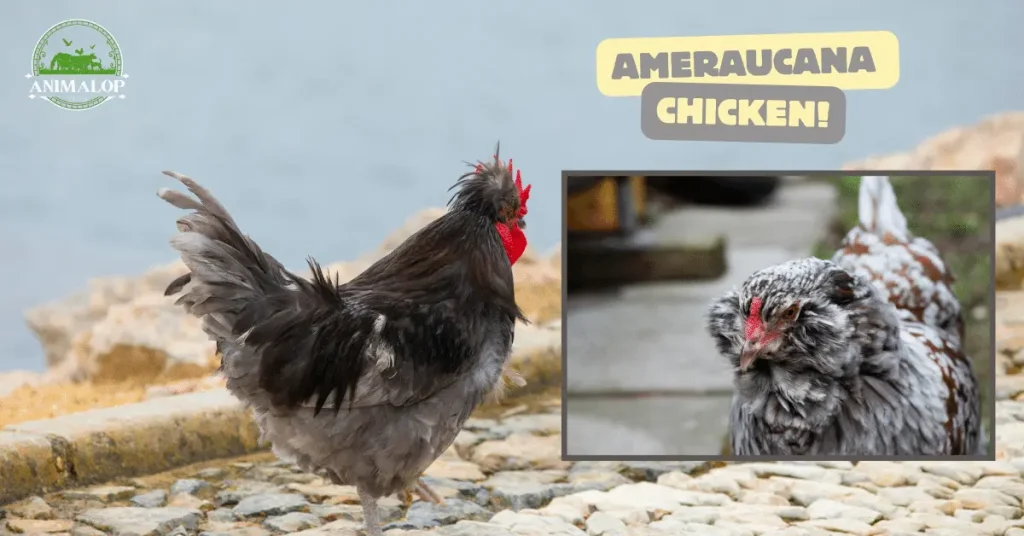
Ameraucana Chickens Quick Breed Profile
Ameraucana Chickens Eggs
Ameraucana chickens can lay around three to four blue eggs each week, which adds up to about 200 eggs a year. That’s pretty good for a smaller chicken! They may start laying eggs a little later than other chickens, but it really depends on the chicken itself.
Some of them usually begin to lay eggs when they get 5 to 6 months old. The first eggs could be small, but they’ll get bigger as the chickens get older. In our farms, our Ameraucanas started laying eggs at 6 months, and now we get fresh, organic eggs right from our backyard.
Besides, Ameraucanas have fluffy cheeks, beards, and a type of comb on their head called a pea comb. They’re medium-sized chickens and are known for laying a decent amount of eggs. DO YOU KNOW ABOUT Sapphire Splash Chicken Eggs
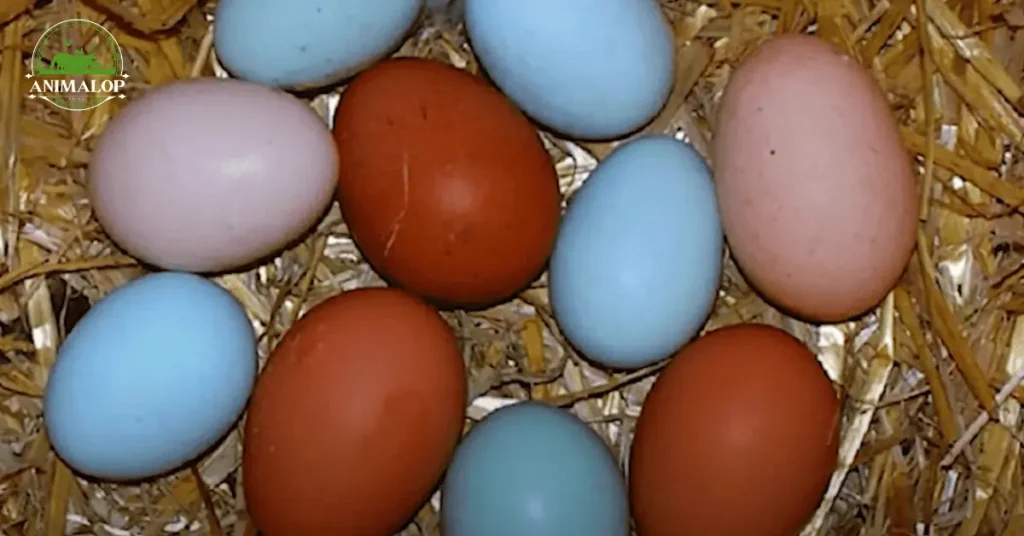
Ameraucana Chickens Appearance
The Ameraucana chicken is a lighter bird with a well-rounded chest, a curved beak, a beard, a small, three-ridged comb on top of its head, and a tail of medium length. Its eyes are a reddish-brown color.
It may have small or no wattles (the flaps under its chin), and its ear lobes are small, red, and hidden under feathers on the side of its head. Their legs are a slate blue color. They usually lay blue eggs, though sometimes the eggs can look a little green.
Other features include their comb shape, white skin, full tails, fluffy cheeks and beards (which they always have together), and legs that are either slate or black in color; they don’t have ear tufts.
The American Poultry Association recognizes several colors for this breed: Brown Red, White, Blue, Black, Silver, Blue Wheaten, and Wheaten. While some backyard chickens can live over 10 years, how long your Ameraucana will live depends a lot on its diet, its genes, and its living conditions.
Ameraucana Chickens Facts
They lay blue eggs, which can vary in different shades of blue.
Their small combs generally do not get frostbitten, making them well-suited for cooler climates.
They are super smart egg layers giving around 270 eggs on yearly basis.
They are identified with their unique muffs and beards.
Ameraucana Chickens Roosters And Hens Size
Ameraucana hens are slightly lighter than the average chicken, weighing about 5.5 pounds. The roosters are on the other hand heavier, at around 6.5 pounds. Both are seen as “light fowl,” which means the smaller, bantam version of Ameraucanas is really small.
Ameraucana Chickens Temperament And Behavior
Ameraucana chickens are much calmer and nicer than Araucanas. They are strong and healthy birds. Known for being friendly and relaxed, they fit well in backyard flocks and with families.
They’re easygoing, simple to take care of and do well in various places. Ameraucanas are also curious and lively, liking to search around and check out their area.
Ameraucana Chickens History And Origin
The Ameraucana is a type of chicken from the United States. It was created in the 1970s from Araucana chickens that came from Chile. The goal was to have chickens that lay blue eggs but without the health problems of the Araucana. You can find Ameraucanas in both regular and smaller (bantam) sizes.
Back in the 1930s, Ward Brown Jr. saw a picture of a chicken laying blue eggs. After many years and lots of mixing different chickens, the Ameraucana chicken was created. It mainly comes from the Araucana chicken from Chile, known for sometimes laying blue eggs but also having some health issues.
By 1984, the breed was officially recognized, and laying blue eggs became a normal thing for them. Ameraucanas are healthier and lay eggs more reliably than their Araucana ancestors.
Ameraucanas have a unique look with a tail that stands up, a smooth face that goes into a beard, and come in 9 official colors. The Black Ameraucana is the most liked one.
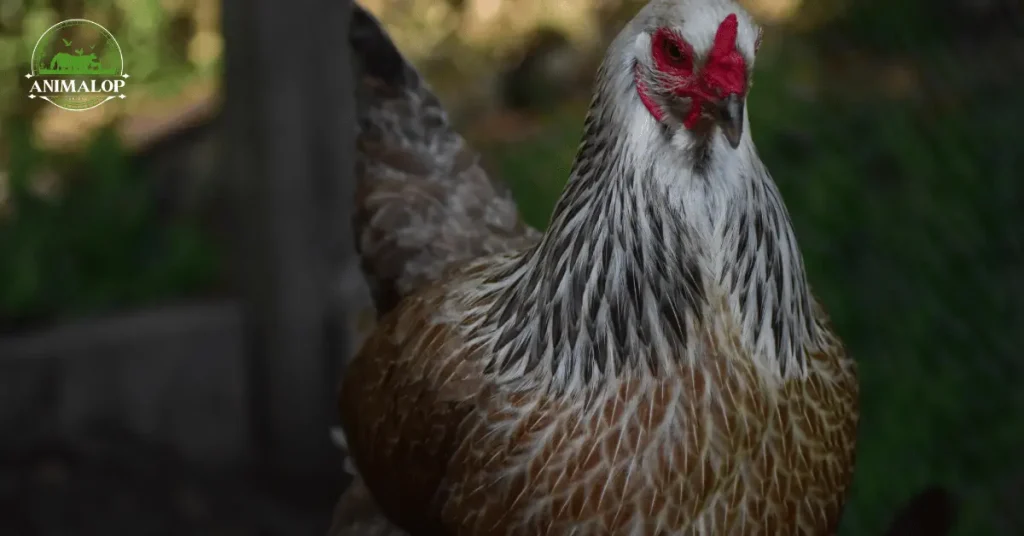
Ameraucana Chickens Care
Diet
Ameraucana active chickens really like to wander around all day, catching bugs and other small things they find. However, giving them a good chicken feed will keep them really healthy.
You should be knowing that chicken feed and scratch are not the same. Feed that’s made just for chickens, like pellets or crumbles, gives them the protein, vitamins, and minerals they need to stay healthy. Scratch is more like a snack.
If your chickens can’t roam freely and don’t have access to dirt or sandy ground, you ought to give them some grit they can eat whenever they want.
I always make sure to leave out a calcium supplement, like oyster shells, especially for my chickens that lay eggs. You ought to give them clean and fresh water too.
Health Issues
Ameraucana and Easter Eggers, which are chickens that lay blue eggs, have a higher chance of getting a condition called cross beak than most other chicken breeds. Cross beak happens when the top and bottom parts of the beak don’t line up right because the skull is a little squished, causing the beak to misalign.
There’s no way to fix a cross beak, and how bad it is can differ from one chicken to another. These chickens can need a lot of extra care to stay healthy because they often struggle to eat. You’ll have to figure out special ways to feed them.
Taking care of chickens with cross beaks means you’re really committing to looking after them because of their special needs.
Space Requirements
They need pretty enough room because they don’t like being cooped up too much. If you can’t let them roam freely, then you should have at least eight square feet of space for each Ameraucana in their enclosure, and even more, if you can, just to make sure they’re comfortable.
Even if you have a big space for them, it’s still a good idea to let them out to roam and look for food a few times a week.
You’ll really start to see their unique personalities when you give them the chance to explore and move around more.
Moreover, you better not to be concerned about predators. Ameraucanas are pretty smart when it comes to avoiding predators, so letting them free-range is usually not a problem. They’re good at getting back to safety when they need to.
Easter Egger Vs Ameraucana
Easter Eggers and Ameraucanas often get mixed up. This happens because many Easter Eggers look a lot like Ameraucanas; they often have the same fluffy cheeks and beards. They can also lay blue eggs just like Ameraucanas.
Ameraucanas are a specific breed, while Easter Eggers are a mix of breeds. Easter Eggers comes from breeding an Araucana or an Ameraucana with another type of chicken, like the Silver Spangled Hamburg or Rhode Island Red. They don’t have consistent offspring. Easter Eggers, sometimes called ‘Easter Egg chickens’, can still lay blue eggs.
FAQs
Final Thoughts
I think Ameraucana chickens are a great pick if you’re into raising chickens. They lay cool blue eggs and are pretty friendly, which makes them fun to have around. You ought to do great care, specifically when it is about what they eat and making sure they have enough room.
It’s also important to know they’re not the same as Easter Eggers, even though they look similar. If you want a chicken that’s easy to get along with and gives you unique eggs, Ameraucanas are a solid choice.

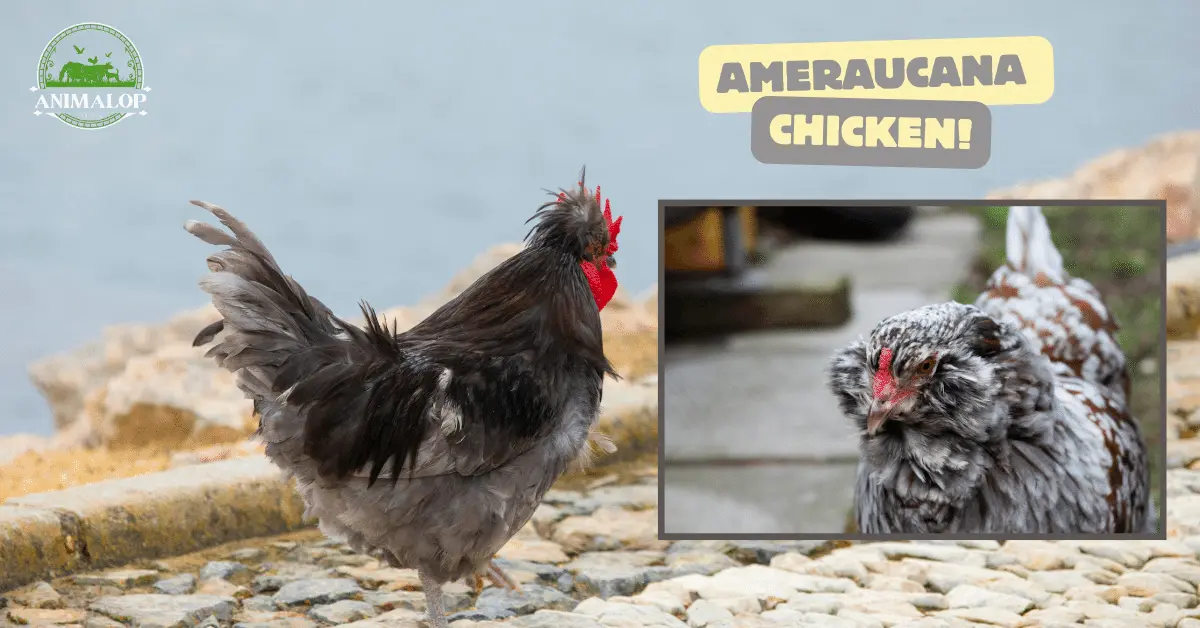
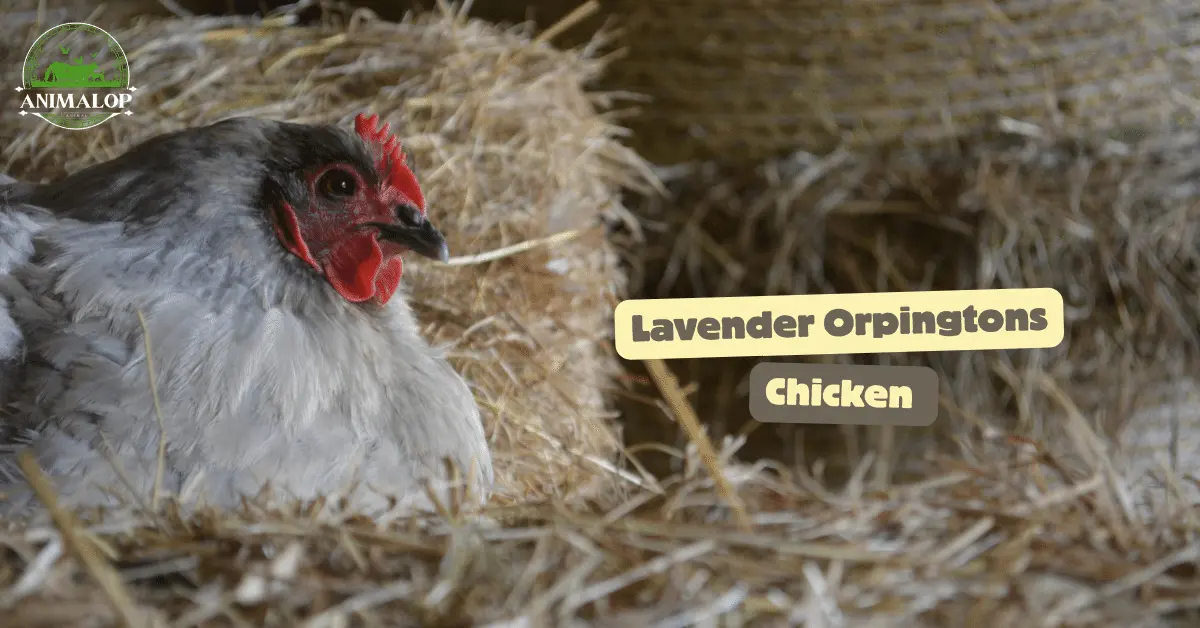
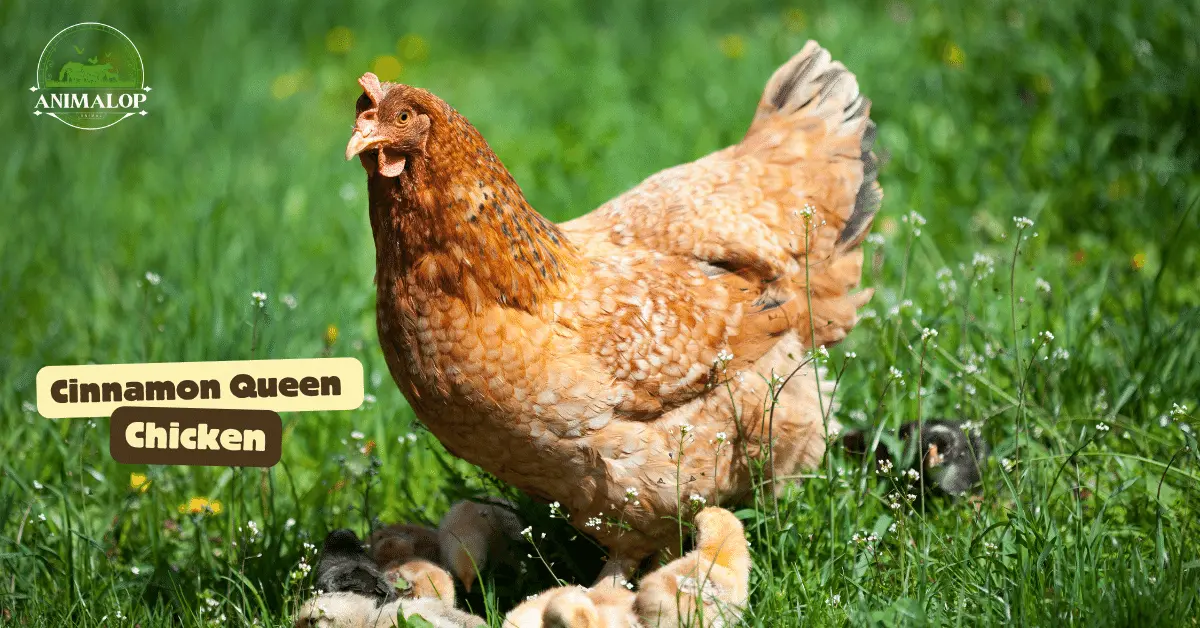
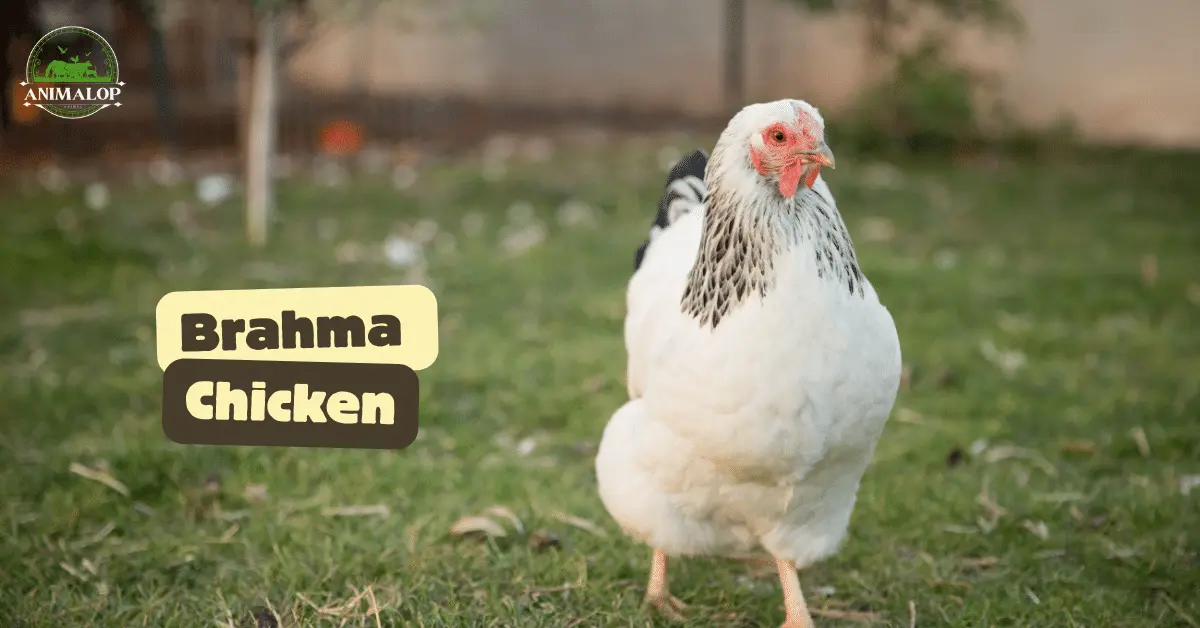
7 Comments on “Ameraucana Chickens Breed Guide 2024: Size, Eggs, & More”